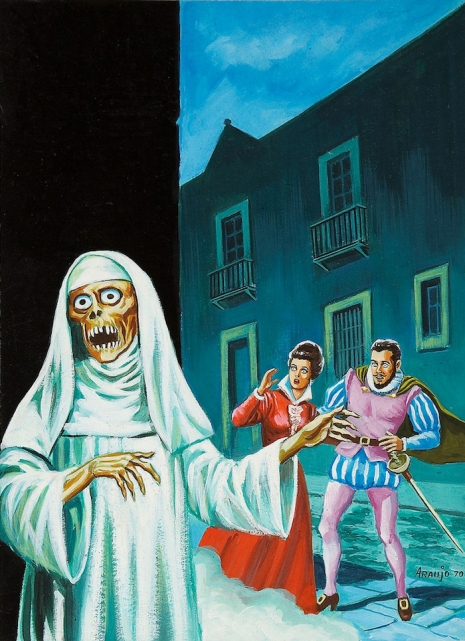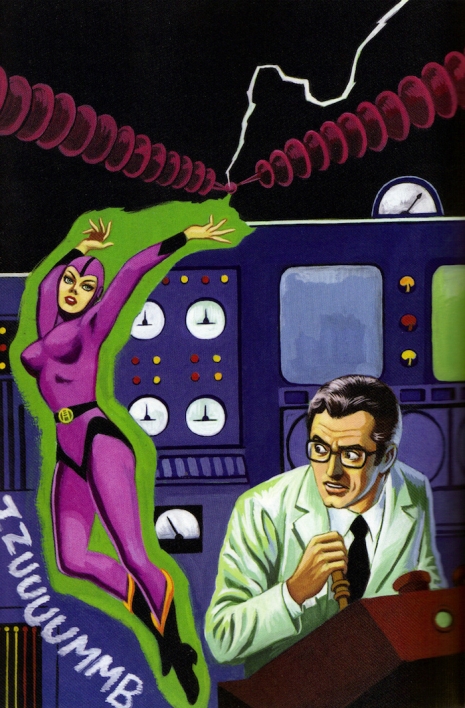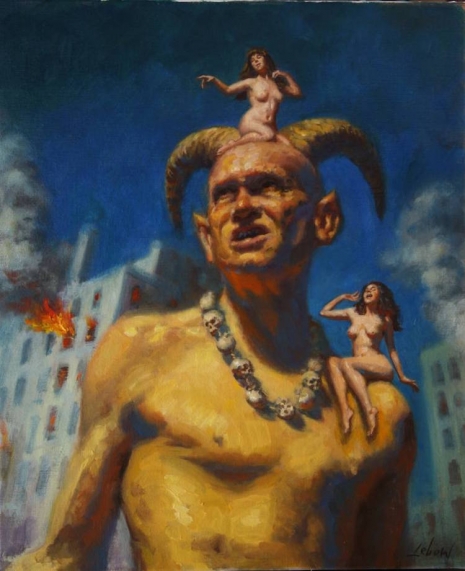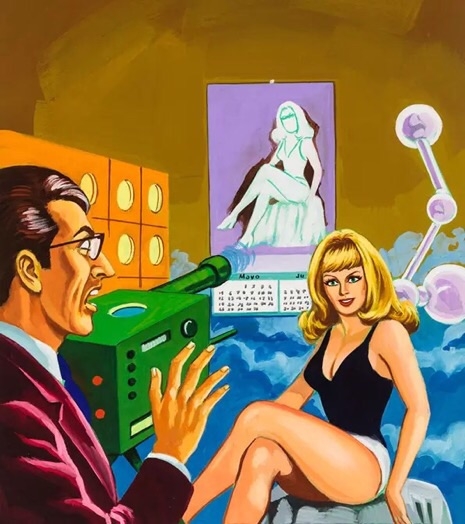
We have their paintings, their names, and that’s about it. Araujo, Dorantes, Fzavala, Marin, Pérez, Luna, and Ortiz. Many more just disappeared or have been forgotten leaving only an unsigned canvas as evidence of their careers.
These were the artists who produced work for Mexican comic books and pulp magazines during the fifties, sixties, and seventies. Most were treated like casual laborers hired to churn out work on a daily basis to meet the massive demand for comic books. To get an idea of scale: it’s estimated that some 56 million comic books were produced every month in Mexico during the mid-seventies. This was when Mexico’s population was around the 65 million mark—that’s one helluva lot of comics and one helluva lot of paintings.
Mexican comics had first taken their lead from the influx of US comic books during the 1940s. By the late 1950s, they were producing new and original stories and characters specifically for the Mexican market. Titles such as Los Supersabios, Los Supermachos, Los Agachados, Las Aventuras del Santo, Tinieblas, Blue Demon, El Tío Porfírio, Burrerías, Smog, Don Leocadio, Zor y los Invencibles, Las Aventuras de Capulina, Las Aventuras de Cepillín, and El Monje Loco all became best-sellers. Unlike US comics which were by then bound by a comic’s code, Mexican comic books and pulp magazines were able to publish work uncensored. This led to the rise of more salacious, brutal, and extreme storylines and artwork.
In 2007, Feral House issued a book celebrating the best of these pulp and comic book paintings called Mexican Pulp Art. In her introduction, Maria Cristina Tavera explained that these paintings reflected “The fantasy elements reflect Mexican attitudes about life, death, mysticism, and the supernatural.” Interest grew in the subject and in 2015, a selection of some of these original works was exhibited under the title Pulp Drunk. While there are still many gaps to filled in over the who’s and when’s and what’s, there is still a massive archive of brilliant, brash, and dazzling artworks to be enjoyed and thrilled over.


More lurid pulp paintings, after the jump…











